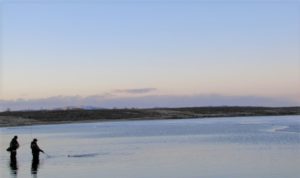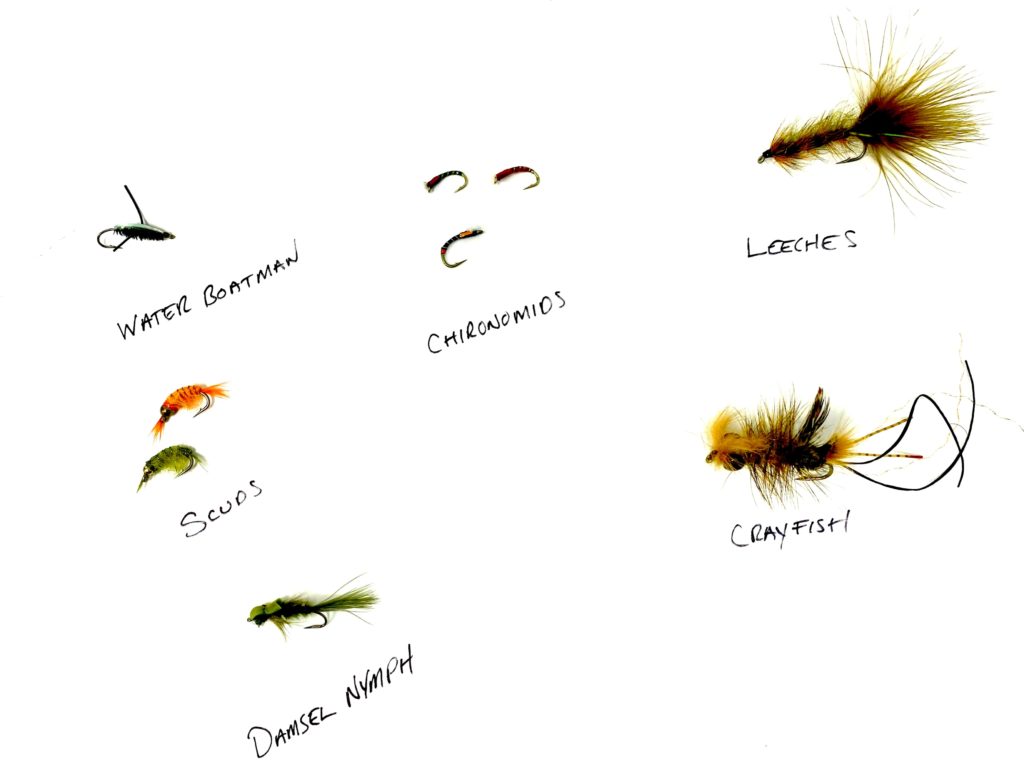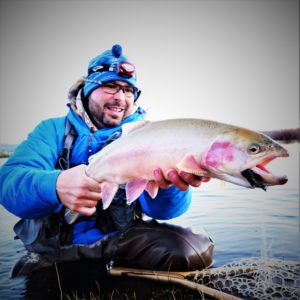Fly Fishing ICE OFF at Delaney Butte Lakes
 April is an epic month in Colorado for anglers. For us at North Park Anglers, April 1st is our opening day, and usually, we have stretches of open streams to keep us busy as we await the Ice coming off the local still-waters. Yes, we are well known for the famed Delaney Buttes, and the anticipation of the Ice coming off these fisheries is extreme. Here at the fly shop, I know we’ll be fielding many phone calls, all asking the same question. Are the Buttes Open? One after one, we knock them down with the same answer. No, but we will keep checking and trust me, we will let you know when they are. I realize the anticipation is real, heck we’re awaiting the same darn thing. Day after day, someone from the shop will drive out to the lakes and cruise the shorelines like a hawk flying over a hayfield, searching for the first spot to crack. Anglers are getting excited for the Ice to recede, especially those who favor still-water fisheries. So we must ask why, why is Ice off so anticipated and, why do anglers go crazy for it?
April is an epic month in Colorado for anglers. For us at North Park Anglers, April 1st is our opening day, and usually, we have stretches of open streams to keep us busy as we await the Ice coming off the local still-waters. Yes, we are well known for the famed Delaney Buttes, and the anticipation of the Ice coming off these fisheries is extreme. Here at the fly shop, I know we’ll be fielding many phone calls, all asking the same question. Are the Buttes Open? One after one, we knock them down with the same answer. No, but we will keep checking and trust me, we will let you know when they are. I realize the anticipation is real, heck we’re awaiting the same darn thing. Day after day, someone from the shop will drive out to the lakes and cruise the shorelines like a hawk flying over a hayfield, searching for the first spot to crack. Anglers are getting excited for the Ice to recede, especially those who favor still-water fisheries. So we must ask why, why is Ice off so anticipated and, why do anglers go crazy for it?
Ice off is an excellent time of year to break the cabin fever, but more importantly, for diehard anglers, it’s one of the best time-frames of year to catch Big Fish. Ice off shifts the advantage to the fisherman because trout will be congregating to shallow water to feed. The shallow water, usually 12 feet and less, is where most of the fish will be cruising. This zone is where the foods, which include scuds, leeches, damsel nymphs, water boatman, chironomid larvae, and crayfish, will be living in the aquatic vegetation. Because there is not warm enough water for any prolonged insect hatches, the fish need to feed in this zone. A patient angler can sit and watch as fish periodically cruise the shorelines in search of one of these food items.
Anglers can do best with a variety of methods. The first would be using a floating line and Indicator fishing, suspending a two or three fly rig equipped with scuds, water boatman, or chironomids. Second would be using an intermediate sink line or WF floating line and stripping (retrieving) leeches, scuds, water boatman, and damsel nymphs. Lastly, using a full sink line and stripping leeches or crayfish along the bottom. All three methods will be deadly and will have their time to shine. This time-frame is not an all-out fish-catching extravaganza; in fact, the feeding windows will be short and periodic. Anglers might spend a long day at the lake with intermittent periods of action. This action will be good and might provide shots at some of the biggest fish in the given lake.
My favorite time to fish during ice-off is during twilight hours, both am and pm. These time-frames have always been very productive, and it’s also when the wind is down. With the light wind, I can see into the water better. I look for cruising fish, and if I can identify the direction they’re heading, I will try to lead them by 3-4 feet with a cast. My preference is a floating line with a 9 foot 0X leader equipped with an un-weighted black leech. Once the fish is within a foot or two of my fly, I will move the fly 6-10 inches. If all goes well, the fish will ambush the fly the second they see it. The other thing I look for is “nervous water.” This “nervous water” is represented by a boil or push of water, which usually indicates an ambush or cruising fish. Either way, if I can spot the fish before it spots me, I can generally catch them, given I don’t blow the cast.
This Ice off window will last until the lake turns over. Turn over is when the lakes water columns mix and revitalizes the lake with oxygen. Turn over usually happens within two-three weeks after the Ice is entirely off. During turn over the lake will look muddy and fishing is generally very poor. It can take 3-5 days for the lake to re-stabilize and for the fish to begin feeding again. After the turnover, the start of the years’ prolific insect hatches will begin, usually starting with chironomids.






